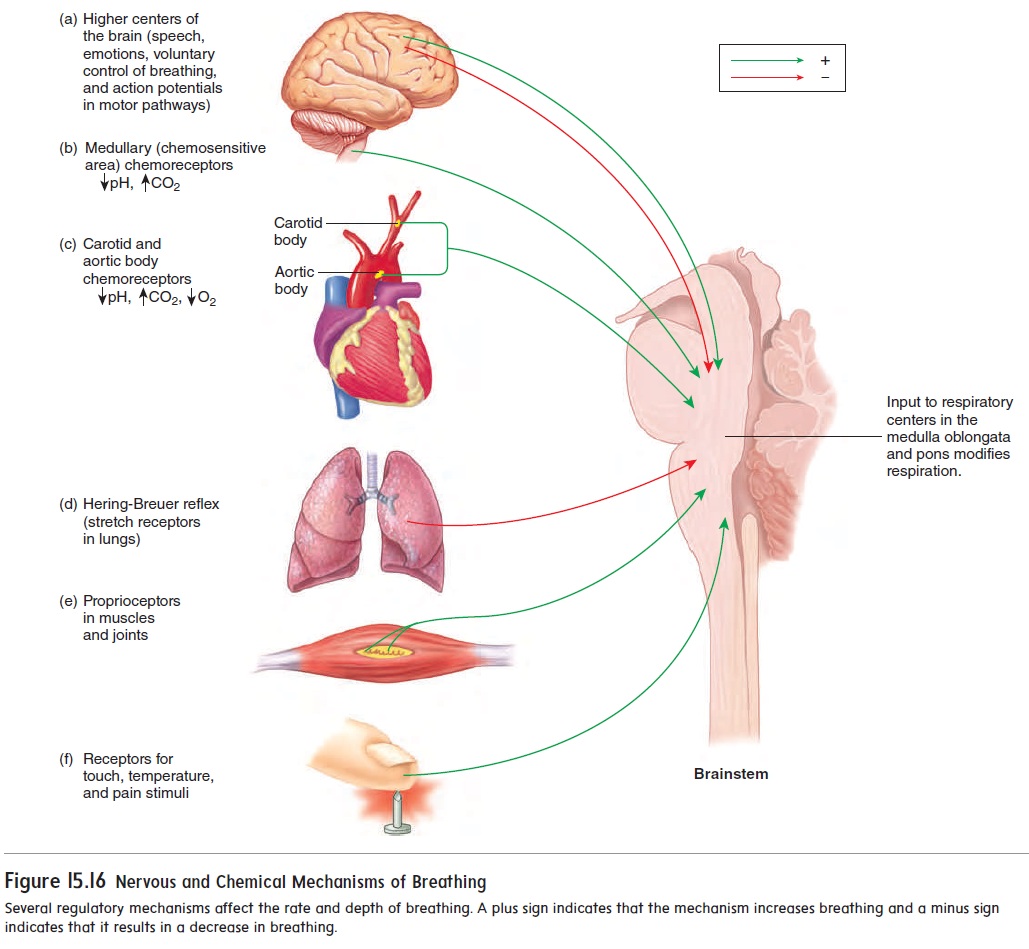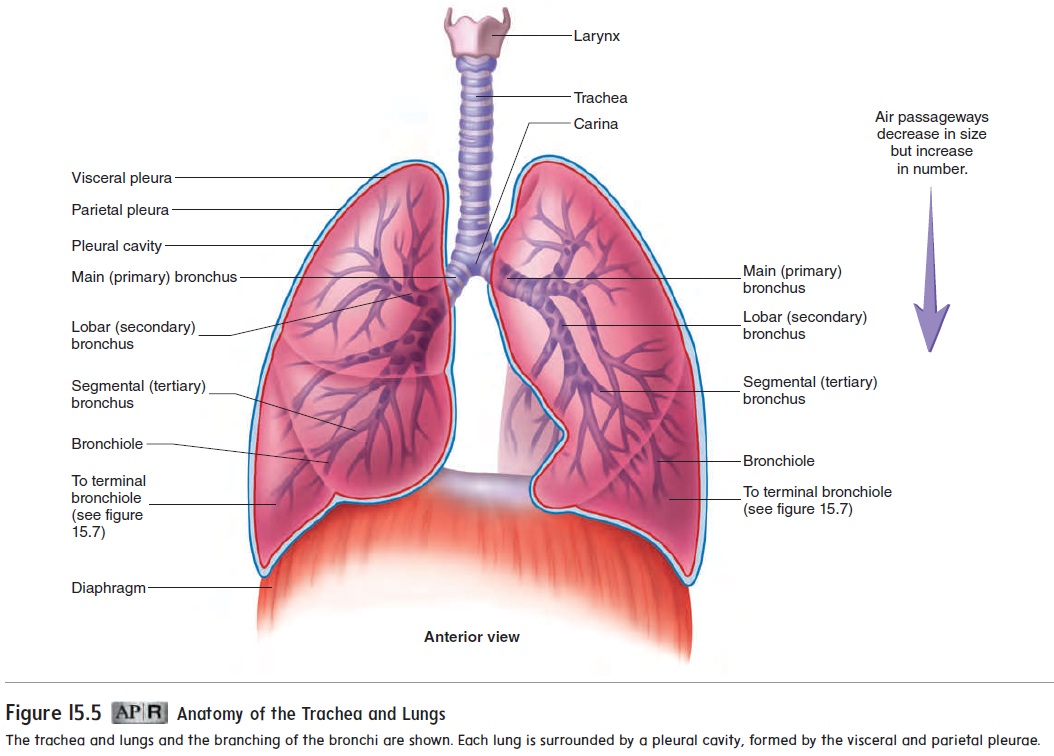Chapter: Essentials of Anatomy and Physiology: Respiratory System
Effect of Exercise on Breathing
Effect Of Exercise On Breathing
The mechanisms by which breathing is regulated during exercise are controversial, and no single factor can account for all the observed responses. Breathing during exercise can be divided into two phases:
1. Breathing increases abruptly. At the onset of exercise,the rate of breathing immediately increases. This initial increase can be as much as 50% of the total increase that will occur.
The immediate increase occurs too quickly to be explained by changes in metabolism or blood gases. As axons pass from the motor cortex of the cerebrum through the motor pathways, numerous collateral fibers project to the respiratory center. During exercise, action potentials in the motor pathways stimulate skeletal muscle contractions, and action potentials in the collateral fibers stimulate the respiratory center (see figure 15.16).

Furthermore, during exercise, body movements stimulate proprioceptors in the joints of the limbs. Nerve fibers from these proprioceptors extend to the spinal cord to connect with sensory nerve tracts ascending to the brain. Collateral fibers from these nerve tracts connect to the respiratory center; therefore, movement of the limbs has a strong stimulatory influence on the respiratory center (see figure 15.16e).
There may also be a learned component in the breathing response during exercise. After a period of training, the brain“learns” to match breathing with the intensity of the exercise. Well-trained athletes match their respiratory movements more efficiently with their level of physical activity than do untrained individuals. Thus, centers in the brain involved in learning have an indirect influence on the respiratory center, but the exact mechanism is unclear.
2. Breathing increases gradually. After the immediate increasein breathing, breathing continues to increase gradually and then levels off within 4–6 minutes after the onset of exercise. Factors responsible for the immediate increase in breathing may play a role in the gradual increase as well.
Despite large changes in O2 consumption and CO2 produc-tion during exercise, the average arterial O2, CO2, and pH levels remain constant and close to resting levels as long as the exercise is aerobic . This suggests that changes in blood gases and pH do not play an important role in regulating breathing during aerobic exercise. However, during exercise, the values of arterial O2, CO2, and pH levels rise and fall more than they do at rest.
Thus, even though their average values do not change, their oscillations may be a signal for helping control breathing.
The highest level of exercise that can be performed without causing a significant change in blood pH is the anaerobic thresh-old. If the exercise intensity becomes high enough to exceed theanaerobic threshold, skeletal muscles produce lactate through theanaerobic process of anaerobic respiration (see figure 17.5). Lactate released into the blood contributes to a decrease in blood pH, which stimulates the carotid bodies, resulting in increased breathing. In fact, ventilation can increase so much that arterial CO2 levels fall below resting levels, and arterial O2 levels rise above resting levels.

Related Topics